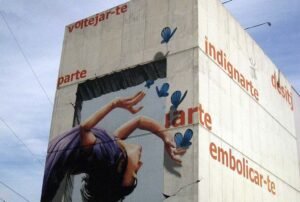October 8, 2012; Source: Guardian (Poverty Matters Blog)
If some sorts of aid—and philanthropy—underscore the dependence of recipients on the largesse and decision-making of donors, the Urban Poor Fund International charts a completely different course, giving poor people control over the spending that is meant to benefit them.
Shack/Slum Dwellers International (SDI)—described as a network of community-based federations in 33 nations of the Global South—created the fund in 2007 to provide capital and technical assistance to community-run projects in cities. According to its website, the fund provides bridge financing (“patient capital”) and venture financing for community projects that meet four criteria: “(1) Does the project create political impact? For example, does it contribute to policy change? (2) Does the project leverage further funds from external actors, especially the State? (3) Does the project have a repayment mechanism and/or encourage savings? (4) Does the project demonstrate a precedent that can be taken to larger scale?” Do note the first criterion. Unlike most social and lending investment funds that emphasize underwriting projects on business criteria, SDI/UPFI starts with the idea that political change must be at the forefront of the applicant’s considerations.
Sign up for our free newsletters
Subscribe to NPQ's newsletters to have our top stories delivered directly to your inbox.
By signing up, you agree to our privacy policy and terms of use, and to receive messages from NPQ and our partners.
The key, however, is control by communities and their residents, not by the aid donors. According to Rose Molokoane, an SDI leader living in an “informal settlement” in South Africa, “We are sick and tired of becoming the objects of development…We want to build our own destiny.” Most of the recipients of UPFI projects range from national funds to local savings collectives that also contribute to the projects. When investments are paid off, the money does not return to UPFI, but stays in national accounts.
It is unclear to this reader exactly what the fund has achieved in tangible outputs. The Guardian report says that it has financed the construction of 50,000 homes and secured tenure for 20,000 families, but the fund’s website states that, as of 2010, it had financed the construction of 4,000 homes but secured tenure for 30,000 families. What is clear is that the fund takes pride in its contribution to more fundamental changes, citing policy changes it has helped achieve such as “reductions in minimum plot sizes; changes in building regulation to enable low-cost materials and/or designs; land sharing with the original land owner; allowing community groups to build for themselves using state housing subsidies; invitations to joint committees for improving informal settlements; the first time provision of emergency relief to urban communities.”
As put by Guardian blogger Katia Savchuk, “The bottom line is not full cost-recovery for atomised projects on three-year timetables; it is long-term political transformation.” Because the fund does not recapture investment paybacks, it has to continually seek new contributions from donors. This is an interesting model that we will continue to monitor in the future.—Rick Cohen













